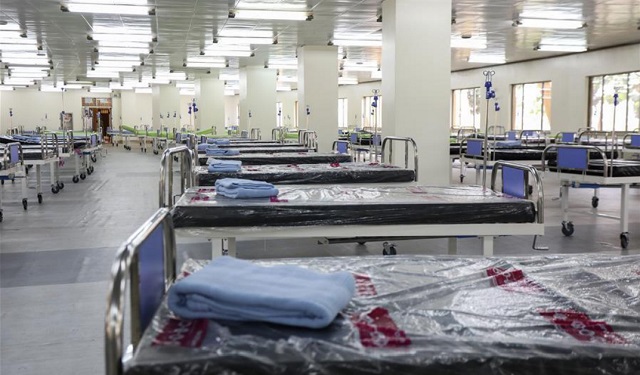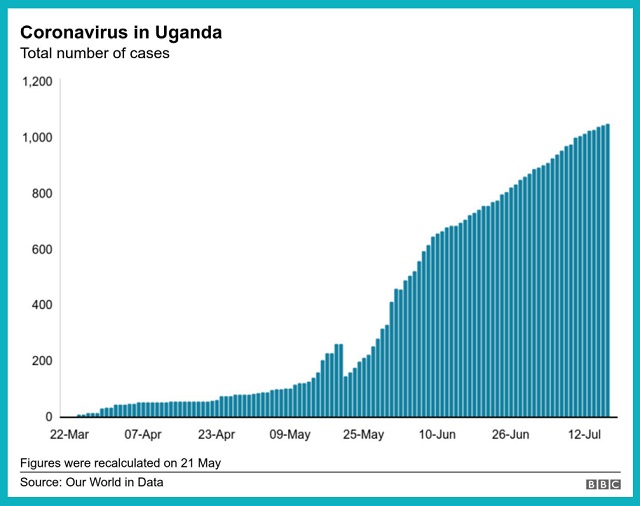
Here’s the tool Ugandan scientists are using to predict cases, lockdowns, and reopening
| THE INDEPENDENT | One of the obstacles if you are trying to guide policy and protect people from COVID-19 is the bewildering amount of data available every day. We are awash in information, but everyone wants to distill insight that makes sense from this.
Policymakers need to make sense of the data so as to predict and manage what’s happening. To address this need, a group of scientists have developed a data-driven disease surveillance framework to track and predict country-level COVID-19 cases.
They are an international team of scientists working on novel ways of predicting diagnosis when presented with a serious infection. They were led by Prof. Steven J. Schiff; the Brush Chair Professor of Engineering, Departments of Neurosurgery, Engineering Science and Mechanics, and Physics, Penn State University, USA.
The team included Dr. Paddy Ssentongo, a physician-scientist and an Assistant Professor at the Center for Neural Engineering, Department of Engineering Science and Mechanics, Penn State University, USA. Ssentongo routinely incorporates spatial epidemiology, statistics, and meta-analyses in all of his work.
Ssentongo is a Ugandan who moved to Penn State to complete a master of public health and a doctorate in epidemiology. He graduated this year.
“This pandemic has shown us that we need to put more emphasis on global public health — especially in places with fragile health care systems, including many countries in Africa,” Ssentongo told his university newspaper. “If we wait for people to get sick, we’re already losing. The best thing we can do is prevention.”
“The tool is a roadmap to tell a country how the pandemic is evolving and where the country is going. It’s successful if the country sees the projections, implements mitigation efforts and sees a lower number of actual cases,” Ssentongo added.
Abraham J. B. Muwanguzi, the paper’s co-author and manager of the science and technology department at the NPA, who is also the principal investigator in Uganda on Schiff’s grant described how the model was used at the peak of COVID cases in September and October of 2020. He said the model projected an increase in cross-border cases, prompting the government to close our border.
“We had fewer cases than projected because we were able to mitigate a predicted source that was captured well in the model,” Muwanguzi said, “We’re working closely with the Ministry of Health to use the model in analysing how the COVID trends are moving.”
Muwanguzi also noted that the tool not only helps provide data for mitigation policies, but it also helps the country plan how to use its resources.
“For example, in March and April of this year, the model projected a tremendous drop in cases,” Muwanguzi said. “Our hospital centers started emptying out — there really were fewer cases. We could then scale down operations and reappropriate resources to other areas of need.”
On June 18, Uganda entered a 42-day lockdown after the daily number of new cases increased from fewer than a hundred at the end of May to nearly 2,000. The week after the lockdown started, the model projected 11,222 new cases would be reported if no mitigation efforts were put in place. According to actual Ministry of Health statistics, the new COVID-19 infection cases declined from 8,880 by June 18 to 6,033 by June 25. Before the lockdown on June 13 the cases were 9,852 and could possibly have climbed higher without the lockdown.
Other scientists on the team were Andrew Geronimo, an Assistant Research Professor, Department of Neurosurgery, Penn State and Claudio Fronterre, a lecturer in Biostatistics, Centre for Health Informatics, Computing, and Statistics, Lancaster University.
They worked in collaboration with Uganda’s National Planning Authority (NPA), to develop the tool which provides a projection of future COVID-19 cases, as well as lower and upper ranges to guide mitigation policies.
The scientists start with model-based prediction of infectious diseases. Ultimately they are interested in improving treatment when the infectious agent is unknown. But for COVID-19, their methods are valuable for understanding and predicting the infection at the population level.
 Until recently, their focus has been on infant infections in East Africa and in Southeast Asia. For over 15 years, they have worked with Ugandan hospitals, healthcare providers, planners, economists, engineers and policymakers on predictive mapping of infant infections and birth defects. As part of its LiveB1G series, the Big Ten Network has featured Penn State professor Steven Schiff, who leads an interdisciplinary team that applies weather forecast modeling to forecast infection risk in infants, providing the opportunity to diagnose diseases in children that cannot be diagnosed with existing technology.
Until recently, their focus has been on infant infections in East Africa and in Southeast Asia. For over 15 years, they have worked with Ugandan hospitals, healthcare providers, planners, economists, engineers and policymakers on predictive mapping of infant infections and birth defects. As part of its LiveB1G series, the Big Ten Network has featured Penn State professor Steven Schiff, who leads an interdisciplinary team that applies weather forecast modeling to forecast infection risk in infants, providing the opportunity to diagnose diseases in children that cannot be diagnosed with existing technology.
Early in 2020 they began discussing ways to use their skills to contribute to the fight against the novel SARS‑CoV‑2, the virus causing COVID-19. They tapped into a wide network of experts, organisations and local authorities. They helped them adapt their approach to generate predictions for week-ahead COVID-19 case numbers.
The scientists created a set of visualisation tools and graphs that are very easy to interpret. Their research paper entitled `Pan-African evolution of within- and between-country COVID-19 dynamics’ is published in the July edition of the journal Proceedings of the National Academy of the united States of America (PNAS). This is the official journal of the National Academy of Sciences.
The scientists created a strategy for understanding the evolution of the COVID-19 pandemic throughout the African continent.
“You need information gathered in real-time on the virus, such as testing and lockdowns, as well as the other influencing factors such as the varied economic security of different countries and their health systems,” said Schiff, “Our strategy synthesizes all of these data across Africa to make surprisingly good projections of the expected number of cases based on how these factors interact and influence COVID transmission in the population.”
Because high-quality mobility data are challenging to obtain across Africa, the approach provides the ability to distinguish cases arising from within a country or from its neighbors. The results further show how testing capacity and social and health policy contribute to the dynamics of cases, and generate short-term prediction of the evolution of the pandemic on a country-by-country basis. This framework improves the ability to interpret and act upon real-time complex COVID-19 data from the African continent.
Their findings emphasise that regional efforts to coordinate country-specific strategies in transmission suppression should be a continental priority to control the COVID-19 pandemic in Africa.
The scientists worked closely with the Ugandan planners and economists to be sure that what they created together could be implemented. They built on a proven method that was already in use in the UK and several European countries, adapting it to the whole of the African continent.
The model used in this study integrates multiple sets of data to predict COVID-19 transmission. Layers, from top to bottom: COVID-19 case counts, specific humidity, rainfall, population, and temperature. Andrew Geronimo
 The Independent Uganda: You get the Truth we Pay the Price
The Independent Uganda: You get the Truth we Pay the Price


